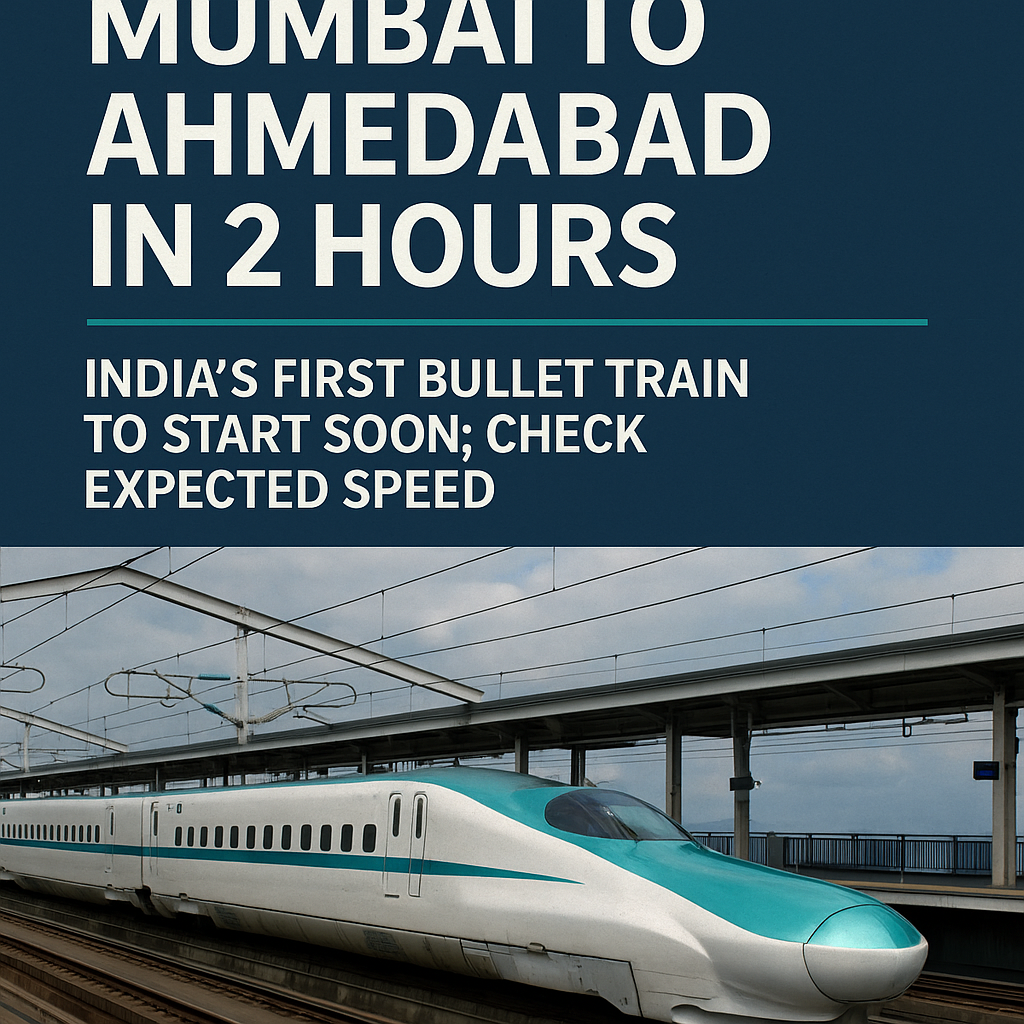Physical Address
304 North Cardinal St.
Dorchester Center, MA 02124
Physical Address
304 North Cardinal St.
Dorchester Center, MA 02124

The long-anticipated bullet train project between Mumbai and Ahmedabad is finally entering its most promising phase. A project of immense technological ambition and strategic national importance, India’s first high-speed rail (HSR) line is set to revolutionize intercity travel. With a design speed of 320 km/h and an operational travel time of just around 2 hours, this high-speed rail is poised to become a milestone in Indian infrastructure.
Officially known as the Mumbai–Ahmedabad High-Speed Rail Corridor (MAHSR), this ambitious project spans approximately 508 kilometers, connecting India’s financial capital Mumbai with the commercial hub of Ahmedabad.
The corridor will include 12 major stations, crossing through Maharashtra and Gujarat.
Stations on the Route:
The route also features India’s first undersea rail tunnel near Thane, a marvel of modern engineering.
Despite initial delays, the construction is now well underway:
The bullet train will operate using Japan’s world-renowned Shinkansen technology, known for its safety, punctuality, and speed.
Two types of services will be available:
The estimated cost of the project is around ₹1.10 lakh crore.
This strategic partnership also includes technology transfer and training of Indian engineers in Japan.
The bullet train will bring massive benefits:
Moreover, it will enhance tourism, business travel, and provide a sustainable transport alternative that reduces road and air congestion.
While the project is now on track, it faced initial hurdles:
Thanks to proactive planning and policy interventions, these challenges have largely been addressed.
Q1. When will the bullet train be operational?
👉 The Gujarat section is expected by December 2027, and the full route by December 2029.
Q2. What will the fare be like?
👉 While not officially announced, expected fares are likely to be comparable to premium AC train or budget flight fares.
Q3. Will there be different travel classes?
👉 Yes. The train will feature standard and executive class compartments, with modern amenities.
Q4. Will the train stop at every station?
👉 Two services will operate – a limited-stop (express) and an all-stop version.
Q5. How environmentally friendly is the project?
👉 The train is electric-powered and aims to significantly reduce carbon emissions compared to road and air travel.
Q6. Will the technology be shared with future rail projects?
👉 Yes. India plans to use the learnings from this project to develop a wider high-speed rail network.
India’s Mumbai to Ahmedabad bullet train is not just a transportation project—it’s a symbol of technological evolution, economic foresight, and global collaboration. Once completed, it will mark India’s entry into the exclusive league of nations with high-speed rail systems and offer commuters an ultra-modern, time-efficient, and sustainable travel option.